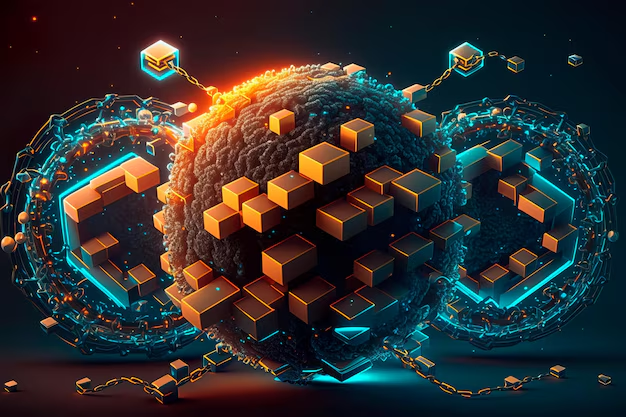Generative AI With AI having revolutionized itself over the years, one of the most transformative forms of AI is Generative AI. Generative AI is focused on creating new content based on existing data like text, images, audio, and even code. Unlike traditional AI systems that are largely focused on data analysis and classification of that data, generative AI is producing outputs out of thin air, essentially generating novel outputs by mimicking the data it has been trained on, in style and structure. By harnessing the power of AI and machine learning, we can unlock new possibilities and drive innovation across various sectors.
In this blog, we will look into the very essence of generative AI, its technology, applications in the real world, challenges, and potential for the future.

- What is Generative AI?
- Use Cases of Generative AI in the Real World
- Challenges in Generative AI
- The Future of Generative AI
- Conclusion
- Frequently Asked Questions (FAQs)
- 1. What is Generative AI, and how does it differ from traditional AI?
- 2. What are some popular examples of generative AI tools?
- 3. How is generative AI used in healthcare?
- 4. What are the ethical concerns associated with generative AI?
- 5. Can small businesses afford to use generative AI?
- 6. What is the future potential of generative AI?
What is Generative AI?
Generative masks a specific subset of AI systems to create new and original content. These include deep learning models like Generative Adversarial Networks (GAN), Variational Autoencoders (VAE) and Transformers to generate channels that closely resemble actual data.
Generating AI is based on three fundamental pieces of technology:
Generative Adversarial Networks (GANs):
GANs are two networks, a generator and a discriminator, that compete against each other. The generator will create some content, and the discriminator determines whether what it created is real or fake. GANs generate outputs that are highly realistic (like photorealistic images) by competing with each other through iterations.
Text Generation:
моделями, такими как GPT (Generative Pre-trained Transformer), были сделаны шаги вперед в области генерации текста. The transformer architecture excels at understanding the context of data, allowing it to generate coherent and contextually accurate content.
Variational Autoencoders (VAEs):
VAEs are applied in creative tasks like generating new product designs or abstract artistic works. The process involves encoding data into a latent space and then decoding it to generate various versions of the input data.
Use Cases of Generative AI in the Real World
Generative AI is being applied to multiple industries, from entertainment to healthcare. Here are some of its most popular real-world implementations:
Content Creation
Sign up for the Center for the Future of Work newsletter with their practical take on future trends in business and the workforce, from generative AI to work-life balance.
- Text Generation: ChatGPT and similar models can compose articles, essays, scripts, and even poetry. They are being employed to generate at scale blog posts, marketing copy, and educational material.
- Image Generation: Applications like DALL·E allow users to create art or product designs from descriptive natural language.
- Video and Audio Production: Generative AI can create hyper-realistic videos and audio, enabling voice cloning, music composition, and automated video editing.
Healthcare
The generative AI is advantageous for the healthcare industry, as it helps to model the complex biological process and create insights in the process.
- Drug Discovery: Generative AI models simulate molecular interactions, accelerating the process of developing new drugs.
- Medical Imaging: GANs have been used for enhancing poor quality medical images which in return helps doctors in making more precise diagnosis.
- Synthetic Data Generation: Generative AI creates synthetic patient data for research purposes, while still maintaining privacy and regulatory compliance.
Gaming and Entertainment
From building immersive experiences to cutting down on production costs, generative AI has changed the face of gaming and entertainment.
- Game Design: AI can create realistic characters, environments, and plots, drastically reducing development time.
- Virtual Reality (VR): With Generative AI we can create dynamic virtual environments in real-time for various VR applications.
- Music & Film: Independent Films and video games also using AI generated music and scripts.
The customer experience and personalisation
In business, generative AI is helping create robust customer interactions and personalized experiences.
- Chatbots and Virtual Assistants: Generative models are used in AI-driven chatbot systems, such as virtual customer service agents, which generate natural and human-like responses to user queries.
- Recommendation Systems: Generative AI analyzes preferences to recommend personalized products, movies, or music.
- Tailored Marketing Campaigns: Generative AI can generate personalized marketing ads that improve engagement levels and conversion rates.
Design and Manufacturing
All industries are using Generative AI to automate their design and manufacturing processes.
- Architecture: Generative AI tools assist architects to quickly visualize and iterate on building designs.
- Production: AI streamlines manufacturing processes and produces tailored parts for diverse sectors.
Education and Training
Generative AI is revolutionizing education by providing individualized education content and experiences.
Personalized Learning: AI generates personalized study materials and quizzes in relation to your learning pace and style.
Training Modules and Simulations: Generative AI creates realistic simulations for training professionals like surgeons and pilots.
It is because, it is designed in a manner that it can give you language learning:It can give you several AI-powered tools giving you real-time pronunciation and grammar feedback to help streamline language acquisition.
Challenges in Generative AI
Despite its great potential, generative AI has some challenges to overcome:
Ethical Concerns:
Generative AI can be harnessed to generate deepfakes, disinformation and plagiarized text.
There has always been misuse so ethical guidelines and more rules and regulations are also necessary.
Bias in Data:
Generative AI models are trained on existing data, which can be biased. Such biases can produce discriminatory outputs.
Computational Costs:
And with the infamous compute resources needed to train generative models, smaller organizations with not as much resources don’t have access to it.
Quality Control:
Another challenge that must be addressed is how to ensure AI-generated content meets quality expectations and user intent.
Privacy Issues:
However, generating synthetic data and maintaining the privacy of original datasets at the same time is not a straightforward task.

The Future of Generative AI
The future of generative AI looks promising, and we will likely see further advancements in its capabilities and applications:
- Examined Methods: Next generation models will work with fewer data and computational requirements.
- In-Time Generation — Real-time generative AI applications will allow for the creation of content that can be generated on the fly, such as video editing.
- Regulation in a Better Way: Governments and individuals will form solid frames to cover moral and legal issues.
- An interdisciplinary approach: Generative AI will work in collaboration with neuroscience, robotics, quantum computing, etc. in seeking out solutions to highly complex problems.
Conclusion
Generative AI is undoubtedly one of the most transformative technologies of our time. Its ability to create new and innovative content is revolutionizing industries, from entertainment and healthcare to education and manufacturing. However, with great power comes great responsibility. As generative AI continues to evolve, addressing its ethical, technical, and societal challenges will be crucial to harnessing its full potential.
For businesses, researchers, and enthusiasts, now is the time to explore generative AI’s possibilities and contribute to its development in meaningful and responsible ways. Whether it’s writing stories, designing products, or discovering new drugs, generative AI is here to shape the future—and the possibilities are endless.
Frequently Asked Questions (FAQs)
1. What is Generative AI, and how does it differ from traditional AI?
Generative AI is a subset of AI that focuses on creating new and original content, such as text, images, or music, by learning from existing data. Unlike traditional AI, which primarily analyzes and classifies data, generative AI produces entirely new outputs.
2. What are some popular examples of generative AI tools?
Popular generative AI tools include ChatGPT for text generation, DALL·E for image generation, and GAN-based models for video and audio creation.
3. How is generative AI used in healthcare?
In healthcare, generative AI is used for drug discovery, enhancing medical imaging, and generating synthetic patient data for research while ensuring privacy compliance.
4. What are the ethical concerns associated with generative AI?
Ethical concerns include the potential misuse of generative AI to create deepfakes, spread misinformation, and plagiarize content. Addressing these issues requires robust ethical guidelines and regulations.
5. Can small businesses afford to use generative AI?
While the computational costs of training generative models are high, many cloud-based platforms offer affordable pre-trained models, making generative AI accessible to small businesses.
6. What is the future potential of generative AI?
The future of generative AI includes more efficient models, real-time content generation, better regulation, and interdisciplinary applications that address complex global challenges.
